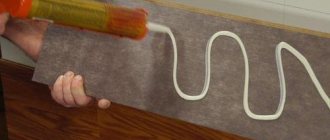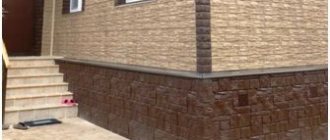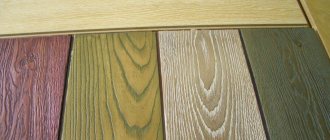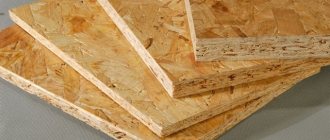How can you paint plastic panels and how to do it correctly?
Wall and ceiling panels made of plastic are in fashion these days. Many residential owners use them as a finishing material. But not everyone is satisfied with the proposed color palette, so the question often arises: how to paint PVC panels and is it possible to paint them at all?
Considering the huge range of paints and varnishes on the sales market, choosing paint for plastic will not be a particular problem for the user. But before you start painting, you need to decide on the color that will most suit the homeowner in the interior of the room. As a rule, acrylic compositions are produced in pastel, medium and rich tones.
How to paint plastic doors
Two types of paints are used for painting plastic products:
- water-dispersed;
- acrylic.
These types of paints are suitable for any PVC surface and are available in different colors, so the doors can be decorated to suit any interior.
Acrylic and water-dispersion paint has the following advantages:
- water-repellent effect;
- attractive appearance;
- quick drying;
- good adhesion to plastic;
- weather resistance;
- color retention when exposed to ultraviolet rays;
- rich color palette;
- ease of cleaning;
- affordable price;
- Possibility of application by spraying or brush.
Important! Acrylic and water-dispersed dyes are environmentally friendly, as they are diluted with water.
Photos of coloring compositions
Having dealt with the type of paint, let's move on to the coloring itself.
Required materials and tools
Before painting plastic panels, it is necessary to prepare the surface for painting, prepare materials and tools, including:
- Cleaner for plastic panels;
- Lint-free cotton fabric;
- Special paint for plastic;
- Protective gloves and respirator.
It is best to treat the surface with a high-quality and inexpensive cleaner. There may be traces of the lubricant that was used to coat it during manufacturing on the plastic. With the help of a cleaner, it is possible to degrease the material, remove dust and static electricity. This product is applied to lint-free fabric. It is used to treat the surface of the plastic. After cleaning the surface, you need to wait until it dries, and only then you can paint.
Many people believe that panels can be painted with a roller or brush. This is a misconception: only a spray gun can be used as a tool for applying paint, and plastic can be painted using the spray method.
On video: types of PVC and MDF panels.
How to paint plastic with your own hands? Features and nuances of painting plastic at home.
Features and nuances of painting plastic objects at home using aerosol cans or simple paint and a brush.
How to paint plastic with your own hands? Features and nuances of painting plastic at home.
Decorative items give the interior of any room a unique and finished look. If you want to decorate your apartment and create a stylish interior without spending too much money on decoration items, then the easiest way is to give a second life to plastic objects and surfaces by painting them with beautiful spray paint. The process of painting plastic with your own hands, if you are well prepared, will not take much time and will not be too difficult.
Surely at home you have a lot of objects made of plastic, polypropylene, polycarbonate, polystyrene - in everyday life all these materials are called plastic.
If you are reading this article, then you are interested in the topic of painting plastic products, and you already have a lot of questions about this: how and with what to paint plastic with your own hands? how to prepare plastic for painting? Do the properties of different types of plastic affect the dyeing process? Is it necessary to prime plastic and others. We will talk about all this in the article.
What kind of paint can I use?
Not every paint adheres to plastic panels. Therefore, there are special types of compositions for such material. Today you can easily purchase paint of the desired shade. When choosing paint for plastic, you need to take into account the conditions under which painting will be carried out. It’s one thing when it comes to interior painting work, and another if it’s carried out outside.
If you choose decorative materials, you should know that they are used for decorative designs, and there are special stencils for their application. Technological compositions are designed to reliably protect the surface from damage and wear.
To avoid problems when working with paints, you need to strictly select those materials that are intended for PVC panels. Painting allows you to extend the life of the plastic and make it a decoration for your interior design.
Plastic is often painted with polyurethane water-based paint, the durability of which has been tested in practice. In order for the paint layer to be more durable and last longer, varnish is applied on top of the dried composition. Drying can be done naturally or forcefully.
Today, polyurethane-acrylic water dispersions are also used for painting plastic surfaces. These painting materials are used to paint windows, doors, panels, and other PVC products. The following advantages of using such dyes can be listed:
- These are environmentally friendly paints and varnishes that do not contain solvents;
- The coating applied with such paint serves as an excellent decorative decoration;
- the coating is resistant to deformation and contamination;
- Such paints are water-repellent.
Acrylic paint for plastic panels dries quickly. So if for some reason the owner is not satisfied with the color of the plastic finishing materials, they can be painted with an acrylic composition. A wide range of colors allows you to choose the material to suit the interior design of any room.
Polyurethane acrylic coatings are resistant to pollution, weathering, elastic and environmentally friendly to use. They do not have a strong odor, are easy to clean from dirt and dust, and have a water-repellent composition. The service life of such coating is long. The only drawback of this material is the difficulty of application.
When choosing paint, you need to pay attention to the composition and instructions, because a good product should dry no later than twelve hours. You should focus on hardness, the degree of repulsion from the surface, and find out about the presence of organic compounds in the paint.
You also need to pay attention to manufacturers of paints and varnishes. Acrylic paints are considered harmless, and after their application the result is a coating that looks like the surface of plastic panels. As for water-based analogues, they are not suitable for painting plastic, since they will simply drain from it.
Paints for PVC doors
PVC doors are painted with either acrylic or water-dispersion paints. Both are suitable for any plastic surface. In addition, they have a large selection of shades. So you can decorate the door to suit any interior you like.
Here are the advantages of both types of paints:
- protection of the processed material from moisture;
- high aesthetics;
- good drying speed;
- excellent adhesion to plastic;
- indifference to environmental factors, including UV rays;
- many shades;
- ease of cleaning;
- cheapness;
- Possibility of painting either by spraying or by brush.
Attention: given that water-dispersion and acrylic paints can be diluted with water, both are environmentally friendly products.
“Armed” with suitable paint, you can move on to painting work.
Features of coloring
Knowing what you can use to paint plastic panels, how to prepare them for this, what available means to use for this, you can begin the painting process. Pay attention to these principles:
- Painting work should begin an hour after tinting the paint.
- Before starting painting, it is necessary to determine the viscosity of the composition and, if necessary, dilute the paint with clean water.
- The paint is applied exclusively with a spray gun.
By following the instructions on how to paint panels, you can achieve excellent results. During work, you need to cover the surfaces adjacent to the panels with film so that paint and varnish material is not sprayed on them.
It is necessary to select the optimal parameters of the spray gun, the diameter of the gun nozzle and operating pressure, and also monitor the thickness of the applied layer. You need to spray the dye in a layer of 6 mm. The thinner the coating, the faster it will dry.
Light plastic can be painted in one layer, while dark plastic can be painted twice. To dry the applied paint, the temperature in the room must be at least twenty degrees Celsius. You need to check whether the panels are dry no earlier than after six hours. If you are not satisfied with the color of the panels, it is better to paint them with an acrylic composition.
Reliable painting of laminated doors
Laminated surfaces are produced under special conditions with a certain pressure and temperature. As a result, the base, impregnated with formaldehyde resins, is firmly attached to the wood board. Such a surface cannot be painted without performing special preparatory operations, which include:
- Cleaning the door leaf from dirt and dust
- Sanding the surface to a rough texture
- Primer of the base with a special compound
- Putty to level the surface
- Grout and finishing primer
All stages must be carried out carefully, so you cannot do without the help of a professional. A specialist can use a grinding machine, with which the entire top layer of the resin film is removed. You need to work very carefully, because under the protective film there is a wood board, which can crumble if moved awkwardly. After applying the primer, the surface should dry within 24 hours. After which the master can safely begin such a process as painting laminated doors. You can use any type of paint to get the job done.
Painting a plastic window sill with modern compounds
Durable PVC double-glazed windows can last a long time, but over time, dark spots, cracks, and scratches appear on them. When discussing what and how to paint a window sill, it is difficult to find an answer without the help of a specialist. Most defects are found on a wide horizontal plane - a plastic window sill is often used as an additional tabletop. It is problematic to update it without a general replacement of window frames. The best solution is restoration with painting.
Why do you need to paint a plastic window sill?
With the repair of a wooden or stone surface, everything seems to be clear; they are easy to restore. But how to paint a white plastic window sill? Enamels, which are traditionally used to open wooden surfaces, are not suitable for PVC windows. Puttying and painting is the best way to update the color and hide defects and stains. A simple restoration procedure is accessible even to a beginner if you choose the right innovative paint for plastic window sills. Separately, it is worth mentioning colored double-glazed windows, which are no longer uncommon in the construction market. During their production, a fade-resistant pigment is added to the liquid plastic mass. If desired, you can install plastic frames with imitation of natural wood, in which even the surface texture repeats the cut of the natural material. It makes no difference whether you paint a white PVC window sill or a colored one; it must be in harmony with the overall design of the interior.
Features of the material
Any surface can be updated. The right choice of materials is needed to change color and improve aesthetics. The window fittings are protected from corrosion by a special coating for Zinga metal. Horizontal kitchen surfaces lose their attractiveness due to increased use. Questions are inevitable about whether it is possible to re-paint plastic window sills, rather than whether it is better to do it at home. The difficulty of updating plastic is that most traditional paints are not suitable for frames and window sills:
- traditional compositions are poorly distributed over a smooth film;
- there will be minimal adhesion to laminated PVC;
- the paint will not apply evenly (puddles, gaps);
- even if you manage to apply the paint in an even layer and wait until it dries completely, it will subsequently peel off in large fragments;
- The window sill will have to be cleaned of this layer and repainted again.
Modern polymer car paints are suitable for plastic windows. New offers from manufacturers - unlimited possibilities for renovation and painting of all types of PVC frames using the following means:
- polyurethane enamels;
- alkyd-urethane;
- acrylic-polyurethane.
PVC frames and window sills have a durable, smooth film with water-repellent properties. Thanks to this, laminated windows look like new for a long time. But due to the maximum protection of such products, doubts arise about the resistance of the painted surface to mechanical stress.
Painting PVC windows at your home
PVC is the most popular material from which all modern windows are made. Let us note that with the help of such PVC windows, designers and architects manage to create real miracles! It wasn't always like this. Previously, exclusively white profiles were used for finishing windows. Fortunately, time moves on and tastes change.
Painting the windows of a house is a very labor-intensive process. Painting of such structures should be carried out exclusively according to the instructions and by professionals. We are pleased to offer you fast and high-quality painting and restoration of windows made of PVC, wood, aluminum, metal and PVC/ABS plastics, as well as all types of restoration work to restore other coatings made of powder enamels and polymer materials.
Thanks to Colority, your PVC windows will find a second life. We offer complete restoration of plastic windows at home. No dismantling, and the quality of painting is as in production!
In order to paint PVC windows on site, it is worth preparing the surface, namely, if the window frame was previously painted in dark colors, or any other paint that has peeled off, cracked and swollen, you should get rid of such defects. Colority can easily handle this task with its matte sanding service.
When painting PVC windows from the outside, it is worth considering the floor level, since if processing of the cornice or canopy is required, additional equipment may be needed.
Choosing paint for a plastic window sill
Innovative dyes are often produced in cans for easy treatment of hard-to-reach areas. Their low demand is explained by low awareness of the population. Often they are used only by car enthusiasts and teenagers - for graffiti. New compounds can be used much more widely in everyday life if it is a specialized paint for plastic window sills. Today, the construction market is replete with dyes of various compositions that “adhere” perfectly to the laminated plastic base. For example, high-quality imported paint PoliPlast RP Base for polymers. A specialized dye for plastic windows is not yet produced, but some compositions are sufficiently compatible with PVC. The elastic layer requires a special primer for polymers.
- Acrylic water-soluble paint is relatively inexpensive, does not have a strong odor, dries quickly, is easy to apply, and has high hiding power. The durable layer effectively levels out minor defects, protecting the surface from mechanical damage.
- Automotive aerosol paint on an acrylic-polyurethane base is easily applied in 2-3 layers. A large selection of color variations for plastic parts is an excellent opportunity to update the equestrian opening and modernize the interior.
- Alkyd enamel is also suitable for plastic window sills, which are often washed and filled with indoor flowers. It can protect the surface from scratches and will be easier to clean with a solution of household detergents. This enamel is not much more expensive than acrylic paint, but it provides a more durable coating.
- Colorless acrylic varnish for polymers can replace industrial lamination. You can choose a matte varnish or with a glossy effect; it will make the color of the PVC window deeper and protect the coating from scratches by abrasive particles and protect it from mechanical influences.
- Specialists usually work with two-component polyurethane-based compounds such as PaliPlast UR. The offer comes in different color options and textures. A durable coating is formed, competing in density with the plastic itself; it is applied after heating above +30°C.
- The Swiss dye “Feyco AG” has high decorative properties; it is suitable for colored plastic. The innovative composition of the joint production from Palina Coatings is not inferior to most imported analogues.
How to paint plastic
Many people think that painting plastic is quite simple, but not all types of this material can be painted.
More precisely, you can paint such surfaces, and the paint will lie quite evenly, but after drying it may peel or crack. In order for the paint to last a long time and the painted surfaces to look attractive, you must first figure out what types of plastic can be painted and what paints can be used to do this.
There are different types of plastics, and each of these materials has unique properties; accordingly, such surfaces must be painted differently. There are also plastics that cannot be painted.
If the plastic is like polypropylene or polyethylene (PE), then it is almost impossible to paint it and any paint will peel off in pieces. That is, if you want, for example, to paint metal-plastic heating pipes (they are made of polyethylene), then nothing will work, so it is better to immediately choose the appropriate shade.
When it comes to plastic automotive parts, they are divided into two types: those that require the application of a special primer and those that do not.
Determining which group a specific plastic part belongs to is quite simple:
- You can lower the product or a small piece of it into the water: if it completely goes under water, then the part does not need a primer, but if it floats on the surface of the water, then it is necessary to apply a special primer for plastic.
- You can also burn a piece of plastic part, cleaned of paint and dirt - if it burns with black smoke and soot, then no primer is needed, if the flame is clean and even, then primer is necessary.
Necessary tool
Before painting a plastic window sill, it is necessary to prepare special clothing, protective equipment, and all working tools. You will need:
- masking tape;
- sandpaper;
- spray paint (different composition);
- construction hair dryer;
- putty knife;
- tassels;
- paint remover (if there is a previous layer);
- putty (masking defects).
When treating a window sill with an aerosol, it is necessary to cover all adjacent surfaces with masking tape, and cover the floors with old newspapers. A protective mask, work clothes and cotton gloves are mandatory attributes when painting. Although many compounds do not have a pungent odor, you need to work with them with great care - wear a respirator and ventilate the room.
Preparatory work
Before you paint a window sill, windows, doors or other surface with your own hands, you should carefully prepare it. To do this you need:
- Remove mosquito nets, blinds, curtains, ebbs and other objects that will interfere with the work.
- Free the surface from mechanical contamination.
- Remove greasy stains.
- Seal rubber seals and other fittings with construction tape to prevent paint from getting in.
- The glass should be covered with plastic film.
For more effective cleaning, degreasing and removing static stress, you can use specialized activator cleaners for PVC. They are applied to a cloth, which is used to wipe the surface to be treated. After this, you need to allow the solution to completely evaporate, which takes from 5 to 10 minutes, and only after that start painting.
If the surface has roughness, scratches and other irregularities, they must be puttied and then sanded with fine sandpaper. Finally, cover the entire surface with an even layer of primer. If you have certain skills, you can do this yourself. But if you have no experience, then it is better to resort to the services of professionals.
Recommendations for coloring
The surfaces of the window sills, if there are several of them in one room, must be prepared for painting:
- wash the window sill well and degrease it;
- sand the entire surface with fine sandpaper to remove the laminating layer and increase adhesion;
- fill deep scratches with putty;
- After the putty has dried, cover it with a primer for polymer products;
- if there are defects, re-grinding is needed;
- thoroughly vacuum the room (abrasive particles reduce the quality of painting);
- cover the surfaces adjacent to the window frames with masking tape;
- Cover floors and radiators with film or newspapers.
Foreign manufacturers offer compositions for degreasing plastic SPS CLEANER Soudal, COSMOFEN. To increase resistance to mechanical damage, it is recommended to apply 2-3 layers of paint over the primer. Use a painting tool. Re-painting is done after the previous layer has completely dried. Plastic has low adhesion, so sometimes you have to sand the underlying paint and primer. Experts use an extra-adhesive primer like PRIMER from Rolax and automotive paints for polymers and carbon fiber in cans.
Helpful advice! If you mix acrylic varnish with decorative paste, you can achieve an inimitable effect - metallic, mother-of-pearl or iridescent golden chips.
What is needed for coloring?
List of everything you need to paint a plastic surface:
- Film for covering the surface of the floor, walls and ceiling (if the doors are high), as well as glass inserts in the door leaf (if any).
- Masking tape used to secure the film and protect the seals.
- Cleaning agent – regular or special for plastic.
- A soft, lint-free napkin made of natural fabric for impregnation.
- Primer.
- A sheet of fine sandpaper.
- Brush.
- Depending on the type of paint, a brush, roller or spray gun is prepared.
- Coloring agent.
- If painting with a roller, use a container for paint.
- Protective clothing to prevent paint from getting on the body.
Doors before painting
Care after coloring
The coloring composition retains its properties longer when preserved with a protective layer of colorless varnish. The glossy surface treated with PaliPlast RP 022 Varnish is quite durable, the color of the main paint looks rich and deep. It gives a magnificent coating effect with a different texture. Painting will last for many years if proper precautions are taken. Do not clean with detergents containing abrasive particles. Salt, soda, and pastes for cleaning plumbing fixtures are also not recommended. It is best to wash off dirt with a soapy sponge soaked in dishwashing detergent.
Do-it-yourself painting of plastic windows
The most common color of modern plastic windows is white. Yes, when ordering, you can ask for profiles to be made in any color, but this will cost money. Why is this particular color present? This is done to simplify production, and as a neutral color suitable for many types of design.
What can you do if you want windows of a different color, but you want to keep costs to a minimum? Is it possible to paint plastic windows yourself? What will be required, and how can you do it without the help of specialists?
Firstly, it is possible to set the initial color of the window or “wood” style only at the order stage. If the window is already installed, then changes can only be made by painting.
How to paint PVC doors and windows
A plastic profile, unlike solid wood, does not require serious preparation; however, the process of painting it should not be taken lightly.
To get a good quality product, it is also important to follow all the steps, including:
- Preliminary cleaning of the profile. All possible contaminants are removed and static voltage is relieved.
- The paint is applied from a sprayer in two layers. The time between application of layers is adjusted based on technological drying standards
- External protective varnish is applied
After all the work is completed, the product acquires an even and rich color, which was previously agreed upon. Moreover, the choice of palette is not limited to standard colors and can be individually selected at the tinting stage.
What colors are suitable?
To choose paint for plastic windows, you need to follow some requirements.
- Persistence. On the street, layers of paint will be susceptible to external factors: temperature changes, humidity, ultraviolet rays. The selected color scheme must withstand all these influences qualitatively.
- Viscosity. During the application process, the paint does not need to form sagging or smudges. Fast setting without fluidity is one of the main requirements.
- Environmentally friendly. Absence of harmful compounds.
The best modern paints that meet these requirements are water-dispersed acrylic-based ones. Just before purchasing a color, you should make sure that it can be used to paint plastic windows; the packaging should be marked for PVC.
Acrylic resins in the applied layer form a durable and stable coating of the required color.
It is important to know that modern paints are initially white by default. After selecting the required color range, dye is purchased separately. The dye packaging indicates the consistency to obtain the required shade.
The advantage of acrylic paints is their quick drying and resistance to fading. They do not have an unpleasant odor, which allows them to be used in enclosed spaces. Such paints are diluted by adding ordinary water to the composition.
What do people in the know advise...
If you strictly follow the correct algorithm for painting a PVC door, while taking into account the opinion of experts, this turns out to be not such a difficult task.
When choosing paint, you need to carefully study the instructions for its use, as well as all the characteristics of the product. If you have any questions, please contact your sales consultant: he will give detailed answers and explanations.
When tinting paint, it is recommended to start applying it after an hour.
PVC doors should not be painted with a brush, otherwise stains will remain. The brush should be left for painting hard-to-reach areas. It is much better to paint other areas using a spray can or a spray gun: this way you can apply the paint evenly without leaving streaks.
It is important that the paint is not too viscous. To do this, it should be diluted with water in the required proportions.
If you use a spray gun, the paint is sprayed over a much larger area than when using a spray can. So before work, you should cover the walls, floor and ceiling from paint with film a couple of meters from the door.
The paint should be applied in layers. Each layer should be given fifteen to twenty minutes to dry.
Each layer of paint, including the first, should be no thicker than 0.7 mm. Otherwise, drips and stains may remain.
When using paints, especially when spraying them, you should also use personal safety equipment. If paint particles end up in the respiratory tract in the eyes, this can lead to irreversible consequences.
The paint should dry at room temperature. There is no need to speed up this process in any way.
Attention: in cold and humid air, the paint on the door will take longer to dry.
So, if you want to update your doors, you don't need to replace them. Simple painting is enough - as they say, “cheap and cheerful.” PVC doors are quite easy to paint. This process includes mandatory steps - preparing everything necessary, preparing the canvas and painting it. If you do everything correctly, following the advice of experts, you can achieve excellent and long-lasting results.
What tools to use
The best option for painting plastic windows is to use a spray gun, which solves several problems at once. This is, firstly, the uniformity of paint application, secondly, the speed of work, and thirdly, the saving of materials.
For manual painting, use paint brushes the width of which corresponds to the window profile.
When cleaning surfaces from remnants of protective film, sealant and polyurethane foam, use a regular plaster spatula.
Window preparation
It is best to paint before installing the window into the opening. On a horizontal surface, doing everything is much easier, and the paint will not form unnecessary sagging. But, you can do all the painting work directly on already installed windows.
Before painting plastic windows, you need to remove the protective film and its remains from the frame. The entire surface is then thoroughly washed.
The window profile must also be degreased. This is done by applying a special plastic cleaner. When it dries, you can proceed to the next stage.
All window seals, as well as glass, are sealed with masking tape and PVC film. When painting indoors, you also need to remove the handles.
Using a flat brush with synthetic bristles, apply a layer of primer.
As a primer option, you can use a composition used when painting plastic parts in cars. For example, "Caparol". It is easy to apply to surfaces and has excellent filling properties, which will help smooth out damage.
How to paint a plastic door
Nowadays, plastic is often used to decorate walls, ceilings, and also to make doors and windows.
Therefore, the question often arises of how to paint a plastic door or other surface made of this material. For this purpose, water-dispersion and acrylic paints are used for painting plastic. They can be used to cover and restore all plastic surfaces. Acrylic paints are most used for this type of work. They are diluted with water and are environmentally friendly, as they do not consist of solvents. The surface painted with acrylic paint has an attractive appearance and has water-repellent properties. These coatings are washable and last a long time. After painting with this paint, the plastic surface dries quickly. To speed up this process, it is possible to use warm drying. Acrylic paints are mainly produced in white color. But if necessary, they are tinted with various colored powders and pastes.
Tools and materials needed for painting
•Plastic cleaner.
•Special lint-free cloth for impregnation.
•Acrylic coloring agent and paste or powder for changing the color of paint.
•Roller, brush or spray gun.
•Paint tray.
Preparing the surface for painting
If you have decided how to paint a plastic door, now let’s prepare the surface of the door for painting. To do this, you should purchase a special cleaner that cleans, degreases and softens the top layer of plastic. After treatment with it, paint will adhere better to the plastic surface. Cleaning the surface is a necessary process, as grease, various lint and dirt may remain on it.
The cleaning agent is applied to a special napkin with which the surface is wiped. Under no circumstances should cleaner be applied to plastic straight from the can, as it will soften the plastic. Places where there is more of this funding will be allocated in the future.
Cleaning should be done in a ventilated area and wearing gloves. Before painting, the surface must dry. 5 minutes is enough for this. The surface must be cleaned immediately before painting.
If such a product has not been purchased, then you can use hot water to wash the surface of the door. After drying, it is treated with a minimum of sandpaper and then wiped with a clean cloth.
Painting a plastic door
Now you know how to paint a plastic door. Next, we'll figure out how to do this. If you noticed that in the tools needed for painting plastic, we included a brush, roller and spray gun. Now it should be said that it is better not to paint with a brush, as it leaves streaks. It is better to use a brush in hard-to-reach places. The best option for painting plastic is a spray gun. With its help, the paint is evenly sprayed on the surface and does not drip.
When the coloring agent is tinted before painting, the process itself should be carried out only an hour after tinting. Monitor the viscosity of the paint; if it is high, then it is worth diluting it with the required amount of purified water. When carrying out work with a gun, the entire surface of the floor and walls nearby should be covered with protective film.
The paint is applied in a layer of no more than 0.7 mm, otherwise streaks may appear and the drying time will increase. When the door to be painted is light in color and painted in the same tone, then one coat of paint will be enough. And if a darker surface is painted in light colors, then two or three approaches will be needed, depending on the appearance of the door. But it should be remembered that each subsequent layer should be applied only after the previous one has completely dried. The drying time should be as recommended by the paint manufacturer.
Drying of the surface should be carried out at standard room temperature and preferably without auxiliary means. It should be remembered that the higher the humidity level, the more the door surface will dry out. And the higher the room temperature, the less time the paint will dry.











